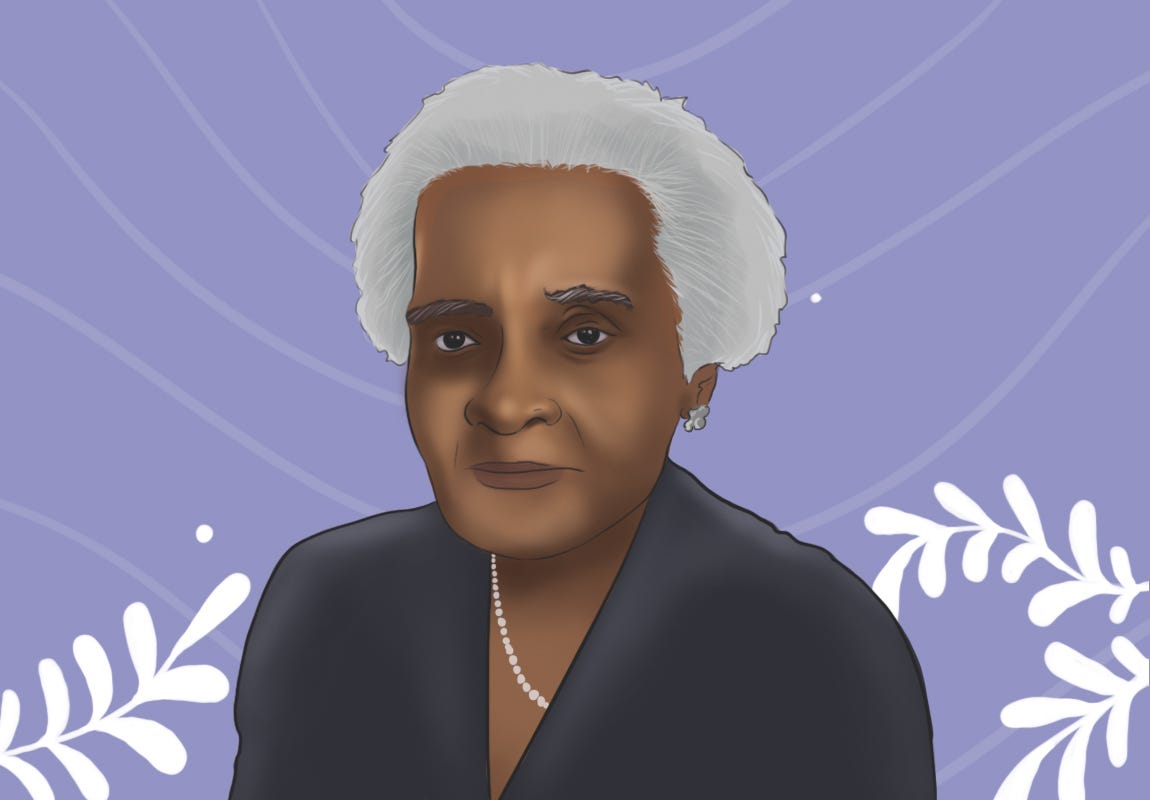Adelaide Smith Casely Hayford was a Victorian feminist who dedicated her life to the education of girls in Sierra Leone, in Western Africa.
According to Blackpast, Adelaide was born on June 2, 1868, in Freetown, Sierra Leone, as the second youngest of seven children of William Smith Jr and Anne Spilsbury. Her family, which was a part of the Freetown Creole elite, moved to England when she was four years old. Soon after they arrived in England, her mother died, and she was then raised by her father in England.
Adelaide attended Jersey Ladies College. Like many other Sierra Leone girls born into the elite class, Adelaide was deeply influenced by Victorian ideals and ideas on gender. According to African American Registry’s official website, when she was 17, she went to Stuttgart, Germany, to study music at the Stuttgart Conservatory. According to Blackpast, she loved travelling, and it was during her travels that she became interested in Pan-Africanist politics.
In 1888, Adelaide returned to England. In 1892, she moved to Freetown to try her hand at teaching. This gave her an opportunity to study and observe the education systems in West Africa.
According to Blackpast, Adelaide fell in love with and married West African author, Joseph Ephraim Casely Hayford. They had a daughter, Gladys, born in 1904 who was born with a malformed hip joint. Adelaide took her to England for specialised treatment and stayed there for three years. The couple got divorced in 1909. In May 1914, Adelaide returned to Sierra Leone where she spent the rest of her life educating African girls.
In 1923, Adelaide established the Girls Vocational and Training School for girls in Freetown.
In Freetown, Adelaide became a leading African feminist. She used her speeches and writings to challenge male supremacy in African societies and to endorse African women’s political rights. In 1915, she delivered a public lecture on ‘The rights of Women and Christian Marriage.’ In this speech, Adelaide shared her vision for expanding African women’s rights and improving educational rights for young women. She travelled throughout the United States, delivering speeches calling for the need for education reform for women in Africa.
Adelaide believed that education would prepare young girls to take pride in their racial identity. In 1923, she established the Girls Vocational and Training School for girls in Freetown. The school’s purpose was to instil cultural and racial pride during the colonial years under British rule. Apart from providing vocational training, the school emphasised African history and culture and taught young girls how to be financially independent.
Adelaide travelled throughout the United States, delivering speeches calling for the need for education reform for women in Africa.
According to Blackpast, as a believer in Victorian ideals, Adelaide intended to prepare young women for the responsibilities of wives and mothers too. At the same time, she sought to build racial pride in these young women and to instil confidence in their ability to become future leaders in all sectors of West African society. She once said: “Instantly my eyes were opened to the fact that the education meted out to [African people] had…taught us to despise ourselves. Our immediate need is an education which would instil into us a love of country, pride of race, an enthusiasm for the black man’s capabilities, and a genuine admiration for Africa’s wonderful artwork.”
She promoted the preservation of Sierra Leone’s national identity and cultural heritage. In 1925, according to African American Registry’s official website, she attended a reception in honour of the Prince of Wales, wearing a traditional African costume, upholding the native culture.
Adelaide was a strong proponent of Pan-Africanism. She was involved in Marcus Garvey’s Universal Negro Improvement Association (UNIA), which was the largest and arguably the most influential Pan-Africanist organisation of the 20th century. She served as ‘Lady President’ of the UNIA’s Freetown branch. In that organisation, she worked with like-minded African women who were committed to black pride and economic self-sufficiency.
Adelaide remained the Principal of the Girls Vocational School in Freetown until her retirement in 1940. She spent her later years writing memoirs and short stories. Her short story, Mista Courifer, was featured in Langston Hughes’ African Treasury: Articles, Essays, Stories, Poems (1960), a collection of short works by African writers, published in the United States.
Adelaide’s daughter Gladys Casely-Hayford became a well-known Creole poet. As a feminist, Adelaide played a significant role in giving women the right to learn and to speak for themselves. She also persuaded mothers to raise their children in their home country so that they could be immersed in the culture that they were born into.
Adelaide Smith Casely Hayford passed away on January 24, 1960.
Now put on your thinking hats and think about the following questions for a couple of minutes.
Can you think of how the Girls Vocational and Training School in Freetown helped young girls to become self-sufficient?
How would you describe the contributions of Adelaide Smith Casely Hayford to the upliftment of women in Sierra Leone?
Write down your thoughts and discuss them with your students, children, and your colleagues. Listen to their views and compare them with your own. As you listen to others, note how similar or different your views are to others’.
Thank you for listening. Subscribe to The Scando Review on thescandoreview.com.
Happy Teaching!













Adelaide Smith Casely Hayford: Cultural nationalist and Feminist activist in Sierra Leone